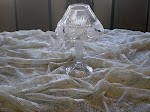Today marks the 65th anniversary of the bombing of Hiroshima by the United States during World War II, which was the first use of this weapon of mass destruction. Watch clips of President Harry Truman discussing his decision to use nuclear force. On Aug. 6, Hiroshima (get facts about the city) was destroyed.
Paper lanterns float in the Motoyasu River in front of the Atomic Bomb Dome in Hiroshima on Aug. 6, 2010, to mark the 65th anniversary of the World War II atomic bombing. Representatives from more than 70 nations, including for the first time the United States, joined tens of thousands at the emotional event.
Days later, a second city was wiped out. Thousands of lives were lost in the bombings, documentaries were made detailing the accounts (watch clips), words about that day are still etched in American history, and a Peace Memorial Museum was built in memory of the dead. This year, the United States will pay its respects.
Here's a look at the facts about the Hiroshima bombing and a man who captured snapshots of one of the most infamous days in history.
The History of the Bombing
The dropping of the first atomic bomb (what was its nickname?) was a deliberately exclusive mission assigned to just three U.S. planes, including this one, which carried the ordnance the morning of Aug. 6, 1945, and two other B-29s that followed at a safe distance to record the effects of the blast. How much did the uranium bomb weigh?
Other Allied aircraft were barred from the area of southern Japan, mostly because scientists who built the bomb didn't know exactly what it would do. What was the code name for this plan?
But there was one more B-29 in the sky over Hiroshima at the moment that the bomb was dropped, and its crew witnessed the event that helped end World War II.
The photographer who captured it all
The iconic image that comes to mind about the bombing of Hiroshima is that of a mushroom cloud of smoke (see pictures). John McGlohon and his 10 Army Air Force crewmen are now credited with snapping those shots. When the bomb blew up, they didn't get the order to stay away from Hiroshima. Instead, they continued on a routine photography reconnaissance mission. (Check out some of the squadrons).
Because McGlohon's plane wasn't supposed to be in the area, lab techs would not have known he took the picture. So, it was credited to one of these planes, which was miles away at the time.
McGlohon's adventures in photography didn't stop with the Hiroshima photos. He helped map what would become this scenic route and this part of the Himalayan Mountains. The man who captured shots of Hiroshima became fire chief in this Asheboro, North Carolina town and served on the city council. But it is that day in August that will always be etched in his memory.
"We saw cities burning every day," McGlohon says.







































No comments:
Post a Comment